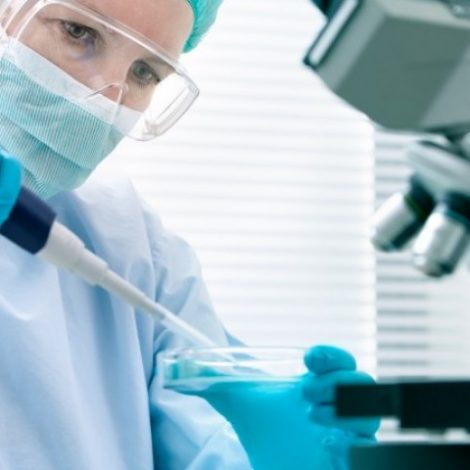$10M in NINDS Grants Will Support CMT Biomarkers Project at URMC
Written by |

Some $10 million in National Institute of Neurological Disorders and Stroke (NINDS) grants aimed at accelerating clinical trials in rare neurological disorders will support a Charcot-Marie-Tooth (CMT) disease biomarkers project.
Funding comes from NINDS’ Clinical Trial Readiness for Rare Neurological and Neuromuscular Diseases program, established to back investigations focused on developing next-generation treatments, including gene replacement therapies.
The CMT program is led by prominent University of Rochester Medical Center (URMC) neurologist David Herrmann, whose work focuses on new gene identification for inherited neuropathies, development of new neuropathy outcome measures, and biomarkers and experimental treatments. It also will involve an international team of scientists and clinicians.
The program’s overarching mission is to create a host of biomarkers and patient-centered measures of meaningful functional improvement that can be used in clinical investigations. Most clinical studies have measured outcomes using the Charcot-Marie-Tooth neuropathy score (CMTNS), which includes symptoms, signs and neurophysiology tests.
“For many neurological diseases, there is a lack of preparedness to run the highest quality clinical trials,” Herrmann, who heads the URMC Neuromuscular Disease Center, said in a press release. “This includes making sure that you have teams in place and ways to effectively measure the effect of a new drug. And because you’re dealing with a rare disease, getting enough patients into a trial is often a challenge.”
Specifically, Herrmann’s team will be assessing a clinical outcomes tool, and imaging technologies, that gauge the integrity and density of muscle tissue and nerve endings.
In addition to URMC scientists, the project will include researchers from the University of Iowa, the University of Pennsylvania, the University of Sydney in Australia, University College London in the U.K., and the Carlo Besta Neurological Institute in Milan, Italy.
Herrmann and other researchers have been developing CMT-FOM — the Charcot-Marie-Tooth Functional Outcome Measure — a performance-based outcome assessment that measures limitations in functional abilities in adult patients.
As outlined in an article published in the journal Neurology last October, researchers studied the feasibility, reliability, and validity of the tool using 43 CMT1A patients whose disease states varied in severity. The study demonstrated that CMT-FOM “appears to be reliable,” and is well-tolerated in an adult CMT1A group matching those likely to enter upcoming clinical trials.
That article said longitudinal studies that would further examine the psychometric properties of the CMT-FOM, and its responsiveness to change, were needed before the assessment’s application in therapeutic trials.
Affecting roughly 2.6 million individuals globally, CMT causes loss of normal function and sensation in the lower legs, feet, hands, and arms. While there is no cure, a greater understanding of the genes that cause CMT has led scientists to begin developing therapies that could prevent or treat CMT.
The NINDS grants also will fund an URMC research program focused on juvenile neuronal ceroid lipofuscinosis (CLN3 disease), the most prevalent form of a family of neurological disorders known as Batten disease.




